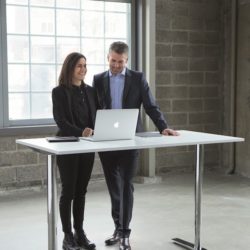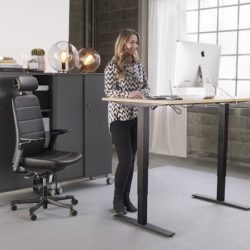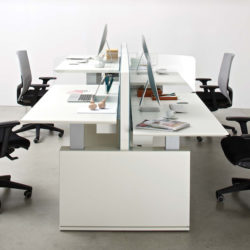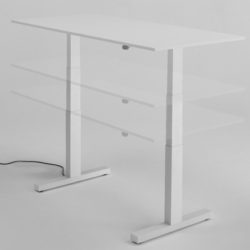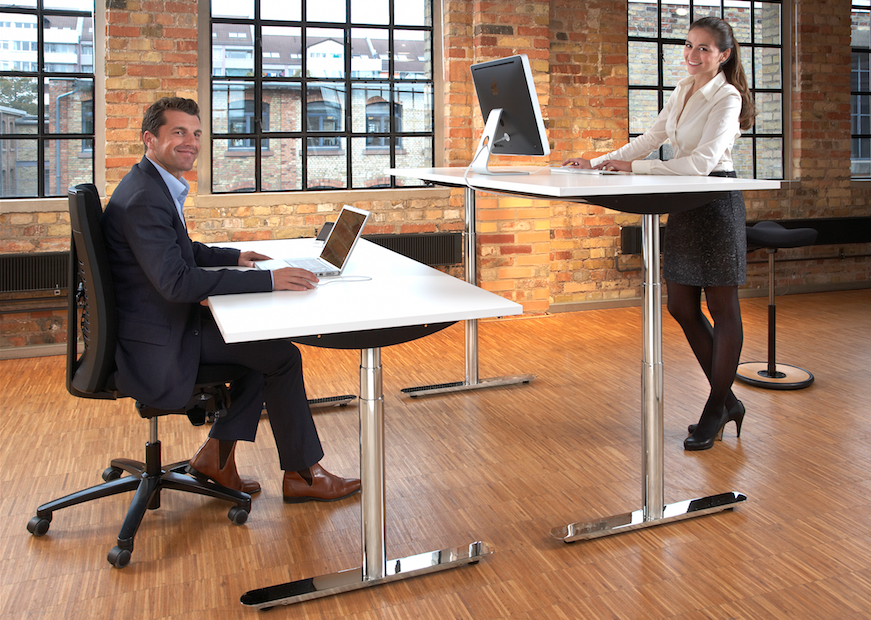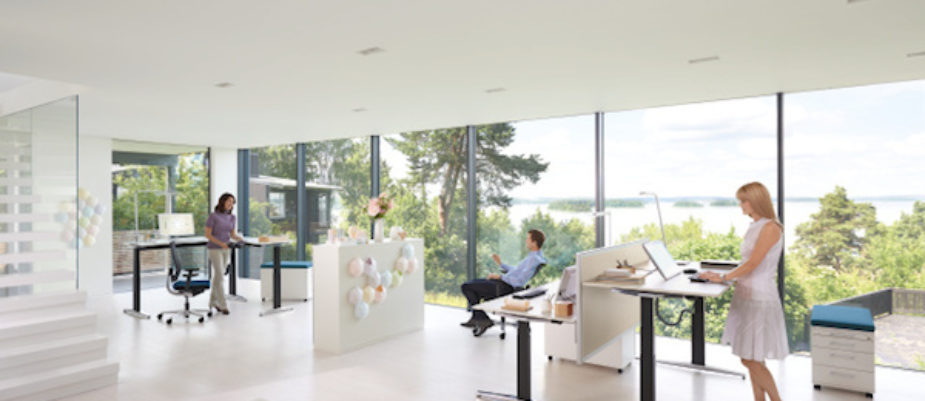
Adjustable height desks are becoming more and more popular and soon they are gonna be the new standard in the office. The Gensler’s interior designer Amie Keener has defined them a new challenge for the workplace design that has to rethink the space in order to include these agile, dynimc and “well-being oriented” workstations in the best way.
“Sitting-standing” desks, as any other innovation in the beginning, offer indisputable benefits, has we already talked about, but they also need some change to give their best.
The downsides, has we are going to see, are not about the object itself, but problems that can be easily solved with a different office design, capable to give an answer and integrate all the new working environment’s trends like flexibility, smart, activity based, hybrid, sharing.
Amie Keener, on the magazine GenslerOn, has counterposed the ergonomic, physical and psychological benefits of the dynamic posture (that supports a flexible use of the workstations and helps to prevent health problems) with some downsides, she has personally experienced in her everyday’s office life, mostly linked to wires and power sources, noise and eyesight.
First of all, Amie Keener had to deal with length of wires problems and the need of having the power sources in the proximity of the desk. This, of course, has a strong impact on the position of the desk in the space: motorized adjustable desks and mobile devices, as laptop, needs power to work properly. So, as the designer said, it is useful “to consider a neat wire management spine or enclose to hide wires and cords”.
An interesting issue is the relationship between adjustable height desks and acoustic comfort. In fact the acoustic design of the space need to be changed, because an higher position requires different solutions to avoid the voices and the noises of the office to disturb.
Dealing with a new position of the subject in the space, it is necessary to rethink the partitions and the dispositions of the workstation and of the sound absorption elements.
The last problem Amie Keener has pointed out is the terrible eyesight given by a messy high desks, striking more at a glance due to the fact that it is closer to eye level than a standard desk height.
“Even the most elegant workspaces can quickly come resemble barely organised pig sites”, she writes.
That’s why adjustable height desks require an higher level of responsibility from the workers, something, however, that is already required by the new ways of working, that are based on the concept of space and object’s sharing.
As also Keener has to admit, adjustable height desks are growing more and more popular in the office, and they are becoming the standard that the office design and the management need to consider in order to create spaces where they can be perfectly integrated.
Text by Gabriele Masi.

